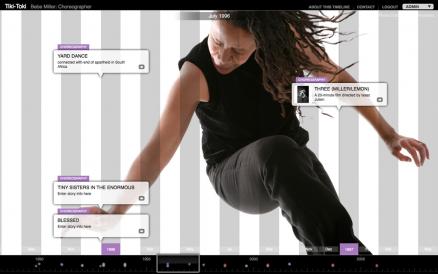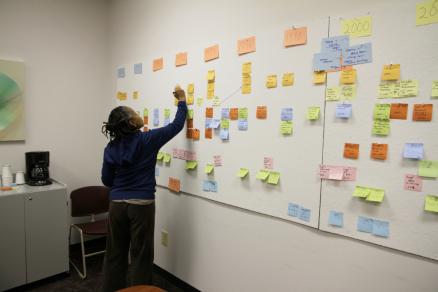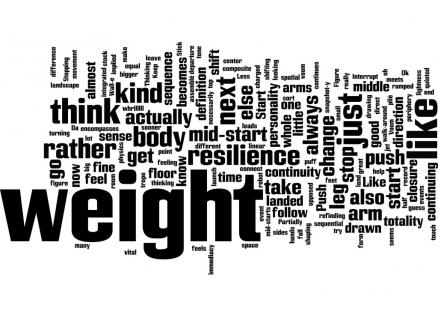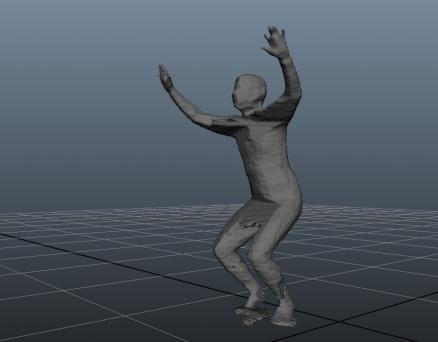Bebe Miller Residency No. 1
Bebe MillerResidency No.1 / 11-14 January 2012For the first TWO project residency with Bebe Miller Company, Creative co-Director Norah Zuniga Shaw drew on her experience working with William Forsythe on Synchronous Objects to bring certain questions to the process, e.g. how does Bebe Miller organize action? What does Miller see and how does she invite this from her dancers specifically? (for more on Norah's questions see the first TWO blog entry) |
|
|
Since time as well as world and life events were identified by the TWO research team as foundational material for the development of Miller's choreography, they decided to construct a timeline. This was collective work everyone in company participated including Miller, her performers Angie Hauser and Darrell Jones (their decade of duet work with Miller is a main research focus) and dramaturg Talvin Wilks. For a description of rationale and process read Creative co-Director Maria Palazzi's TWO Blog Entry. |
|
|
"A critical step within multidisciplinary collaborative work involves establishing a consistent group vocabulary or taxonomy to name what we are talking about. This must be followed by establishing agreement within the group about the term and its meaning." (Maria Palazzi - Blog entry). The Wordle exercise to the right was undertaken as a result of trying to establish a vocabulary specific to Bebe Miller's 'choreographic tendences' (Blog entry). Weight would emerge as critical to what it is that Bebe Miller sees when she watches the dancers. |
|
|
A third major component of the research residency involved making recordings in ACCAD's state-of-the-art optical Motion Capture Lab. In these sessions Angie and Darrell were both asked to start with some improvisation as Bebe directed them towards her choreographic interests. This was intended to capture some of Bebe’s choreographic tendencies as a numeric representation. Additionally, some new markerless motion capture technologies were tested. The advantage of a markerless system is that it can free the dancer from having to wear special suits (Blog entry). |
|
TWO: Bebe Miller/ Thomas Hauert Process Documentation Pages:
http://motionbank.org/en/event/bebe-miller-residency-no-1
http://motionbank.org/en/event/bebe-miller-guest-performances
http://motionbank.org/en/event/thomas-hauert-residency-no-1
http://motionbank.org/en/event/bebe-miller-thomas-hauert-residency-no-2-final-filming
http://motionbank.org/en/event/thomas-hauert-guest-performances
INFO
As a response to the COVID-19 / Corona situation we just opened our research system (including Piecemaker and MoSys) for dance education and practice.
This year Motion Bank celebrates it's 10 anniversary. As soon as it becomes possible to make final plans we will release information about these.
Please consider subscribing to our newsletter.

























